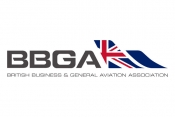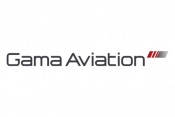As air transport rebuilds, the need for effective slot management is rising at increasingly congested airports
Wednesday 17th July 2024
With airline traffic almost back to 2019 levels, the resurgence of congestion at key airports is increasing the need for ‘slot management’ – the independent co-ordination of flight schedules and resources at the busiest gateways.
“Coordinating flight flows and the services and infrastructure supporting them has always been a delicate balancing act at the most in-demand airports,” highlights Neil Garwood, CEO of UK-based Airport Coordination Limited (ACL), the world’s largest independent slot management company.
“However, with global demand for air travel rebounding more quickly and unevenly than expected, significant new logistical puzzles are emerging for airports and airlines, threatening critical connectivity between destinations,” he adds.
Coupled with that, a mix of local growth drivers in specific markets is expected to significantly reshape airlines’ air traffic flows in the short to medium term, requiring new, data-driven coordination measures to help maximise airport efficiency and fair access.
The International Air Transport Association (IATA) categorises airports according to their ease of access, with Level 1 airports unconstrained; Level 2 facing potential congestion at peak times and Level 3 already experiencing demand which significantly exceeds capacity, requiring independent coordinators to allocate arrival and departure slots. For the current global schedule period, Northern Summer 2024, IATA has designated 386 airports as either Level 2 or 3, of which 219, or 57%, are in the higher category. This trend will continue at least until the end of next year, the current horizon for slot allocation.
ACL oversees 75 airports in 11 countries
“Many airlines have restored or bettered their pre-pandemic operating levels,” says Garwood, whose company coordinates slot access at 75 airports (in 11 countries), including the UK’s nine biggest gateways, key Middle East destinations, including Dubai, Abu Dhabi, and 26 Saudi Arabian locations - from Jeddah to Neom Bay and across the world in the five main airports of New Zealand.
“But growth doesn’t necessarily reflect business as usual,” he adds. “While global air travel has surged back, there are new patterns or prospects of growth in many locations which create fresh operational challenges for key airports.
“Airlines are operating more flights on some routes, fewer on others, adding some new destinations, or exiting others altogether,” says Garwood. “They are also changing the sizes of aircraft deployed to align capacity more closely with demand.”
“The uneven and different scales of recovery have duly placed significant pressure on many airports and service providers such as ground handling and fuel companies to accommodate not just schedules requested by airlines, but also changing volumes of travellers and freight.”
New congestion challenges are emerging in specific markets too, as some airports refresh or even replace infrastructure, progressing projects deferred during the pandemic or preparing for entirely new opportunities with potential to significantly impact slot management.
Changes in the Middle East The operations of ACL client Dubai International, the world’s biggest hub, will be entirely relocated to a new facility at Dubai World Central in 2030. It will be five times bigger, representing a massive logistical undertaking with major potential to continually disrupt flight flows. Neighbouring Saudi Arabia is seeking to dramatically increase its international air passenger traffic as part of a whole-of-economy growth strategy to 2030. Newcomer Riyadh Air is busy aligning with international carriers for connectivity ahead of its scheduled service start. (Currently, much of Saudi traffic connects via Doha International).
Other markets also face disparate and immediate pressures, highlights Garwood, few of them more complex than Australia, where IATA has designated eight of their busiest airports at the highest level of congestion.
Challenges in Australia The biggest hub in Australia, Sydney’s inner-city Kingsford Smith Airport, has long been constrained by some of the world’s most stringent noise abatement conditions, including hourly caps on flight arrivals and departures, reviewed every 15 minutes and a curfew banning most flights between 11pm and 6am. While it remains the nation’s busiest airport, Sydney has, for years, been operating at maximum capacity, restricting access by new carriers or expansion by existing ones.
Now it faces competition from other key airports around the country pursuing new air services, which may prompt it to rethink current slot allocation priorities to retain or attract the highest-yielding services from new or existing airlines. No 2 Melbourne and third-ranked Brisbane – both curfew-free - are now expanding rapidly, while carefully navigating increasing community pressure for the introduction of flight curfews.
By late 2026, the new Western Sydney International Airport is due to open, expected to attract a chunk of both domestic and international traffic currently routed through Kingsford Smith, as well as entirely new routes.
“The changes in Australia are more numerous and complex than many markets,” says Garwood, “particularly for Sydney’s main airport, which is facing not only continued constraints on its growth, but also strong competition from three surrounding curfew-free airports.”
Operations will continue to expand between Australia and key nonstop destinations, including its single biggest international market, New Zealand, and key Middle East transit hubs of Dubai and Abu Dhabi, where ACL coordinates airport slots, he adds.
“With new, innovative and transparent coordination of these and other markets, based on fresh data, there are some good opportunities to help streamline and connect the busiest airports,” he foresees.

Latest News

Wednesday 19th February 2025
ACIA Aero Leasing places ATR72-500 Bulk Freighter with Canada’s KF Aerospace

Wednesday 19th February 2025
Serious consequences for charters operating without a valid UK Foreign Carrier Permit, warns BBGA








Get Social
Twitter Linked in Facebook Instagram